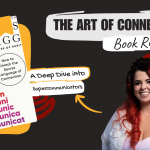In any given second, there are roughly 11,000,000 bits of information bombarding our senses. Your eyes, skin, ears, and senses of smell and taste are constantly working to send as much information to your brain as they can.
The problem is that our brains can only process so much information at a time. From those 11,000,000 bits, our brain has to pick roughly 100 each second to take action on.
Marketing to the Brain
The most successful marketing campaigns are the ones that are able to focus on those 100 items that stand out, as opposed to the 10,000,000+ things people aren’t paying attention to (literally).
So, how does our brain choose? And knowing this – what techniques can we use to build better marketing that helps consumers pay attention to the information we want them to pay attention to?
The brain is a funny thing – and without getting into a Neuroscience course – let’s just say that your current situation in any moment can make some pretty drastic differences to how you interpret the information in front of you (This is known as The Framing Effect). So while there’s no “perfect roadmap” there are 3 big things you can use to build successful marketing campaigns.
Step 1: Make it Matter TO THEM
Let’s be perfectly honest for a minute. Beyond the 11,000,000 bits per second constantly attacking our senses, our lives have become busier than ever. Our inboxes are overrun, our phones are filled with spam calls and our social news feeds are never-ending.
Fitting in time for the things we WANT to do is difficult, let alone taking time away from those things to notice or care about someone marketing to us.
We do have a few things playing in our favor though. To make sense of those 100 inputs each second, our brains subconsciously prioritize things that are important to us, especially if they’re connected to rewarding or painful memories. So let’s USE THIS!!
First – take some time to get a better understanding of what your clients really want. We’re not talking about the features of your business. Ask yourself – what keeps my clients up at night, and what are they worried about the next day? OR – what do they secretly, ardently, desire the most?
For example: Your ideal homebuyers for that safe suburban house you’re listing may wish their children were in a better school district, or may hate their hour-long commute where they currently live. Sellers you may be targeting, could be really worried about the work it takes to down-size and move, or even stage the home.
Second – before you create EVERY campaign, whether you’re sending an email or putting up a Facebook Ad – ask yourself 1 question. “Why does this actually matter to the person receiving it?” (Pro Tip: Be brutally honest with yourself. It’s ok to realize – “it doesn’t matter to them” and move on to a better campaign.)
Example: “Call or text me now if you’re looking to buy, sell or rent.” – We see this everywhere, but there’s no emotion, and it offers absolutely no value to the consumer.
Instead, focus on 1 of those consumers at a time and draw them in with something emotional and valuable.
(Rule of thumb: NEVER start your headline or content with a reference to yourself.)
If you can answer these questions – you’re well on your way to building a great marketing campaign.
Step 2: Always Appeal to Emotion Before Logic
As I mentioned before, our brains tend to prioritize rewarding or painful memories, but that’s just the tip of the iceberg when it comes to the benefits of appealing to emotion in your marketing.
When those 11,000,000 bits of input first come in, they are sent to a part of the brain that quickly parses the information and decides whether it needs “Logical” or “Emotional” interpretation (Sensory Thalamus). However, all logical interpretations must then be sent through an emotional interpretation before a response.
We can learn 2 very important lessons from this.
- The Emotional Response is always the quickest
- There is ALWAYS an Emotional Response
Let’s apply this to our marketing. Think about emotion rather than logic when you write a headline to a blog or an ad. Speak to the emotional side of the brain. You already know emotion sells homes – if someone falls in love with a house when they walk in the door, they’re more likely to overlook negatives.
Instead of “Come see this 4-bedroom 3-bath home, 2,500 square feet on a corner lot” – which gives facts that appeal to the logical side of the brain, you could write something like this instead to appeal to the emotional response, “Walk into your new home and out into the lush backyard of this peaceful, 4-bedroom 3-bath oasis with room for your family to grow.” Using descriptive words that paint a picture for the brain activates the emotional response.
Step 3: Write Like You Talk (Get Back at Your English Teachers)
Many of us, whether it was through High School or College, had teachers who tried to drill a very specific style of writing into us. However, there is a huge difference between scholarly papers and quickly conveying a message, especially for marketing. The best part? You can be great at it whether or not you were able to master those scholarly papers.
Ever play the telephone game? Where you whisper to the person next to you, and by the end it’s totally messed up? Our brains are very similar. Instead of remembering an exact sentence, we remember the core concept of what was written or said. (This is known as The Verbatim Effect)
Additionally, the more complex the sentence becomes, the more work our brains have to do to break it down until eventually we cap out. (This is called Clustering) However, there are some strategies we can use to maximize the amount of information someone retains and acts on.
One of the most widely-known examples of this are phone numbers. Is it easier to remember 8006222540 or 800-622-2540? By organizing the information and grouping it in small chunks, we’re able to drastically improve the amount of information someone retains.
When it comes to writing, you want to:
- Focus On A Great Headline
- Break sentences into the core concepts. Example:
- Before: “Make sure you send your writing to a friend 3 days beforehand so they can edit it and always track your changes.”
- After: “Always have a friend edit your work. It’s easiest to send it at least 3 days beforehand so they have time. Don’t forget to track your changes.”
Instead of thinking too deeply into this – use one of the best pieces of advice I’ve been given, and something I refer back to constantly. You naturally speak with the goal of conveying a message, or getting your unique audience excited about a topic. So, write like you talk!
Long before society could read, we were conditioned to exchange information verbally. In fact, you retain roughly 10% of what you read vs. 20% of what you hear. So, the more your content sounds like how you would normally talk to someone, the better you’ll do.
… but wait, there’s more…
Would you like some more examples and in-depth information about how to use language to help your Facebook Ads, Posts, Emails or even Sales Letters perform better? Well, you’re in luck. We covered some of the basics in this article, but I have a special offer for you.
Tomorrow, I’m offering limited spots in a live, one-time-only, Real Estate Masterclass on how you can “Close More Deals with Content that Converts.”
This Masterclass is all about how our brains interpret marketing, and how can we use that knowledge to get a better response to our campaigns.
This course, and the material that goes with it, is jam-packed with examples and templates you can use in your business right away. The class is almost full already, so you definitely want to sign up now.








Leave a Reply